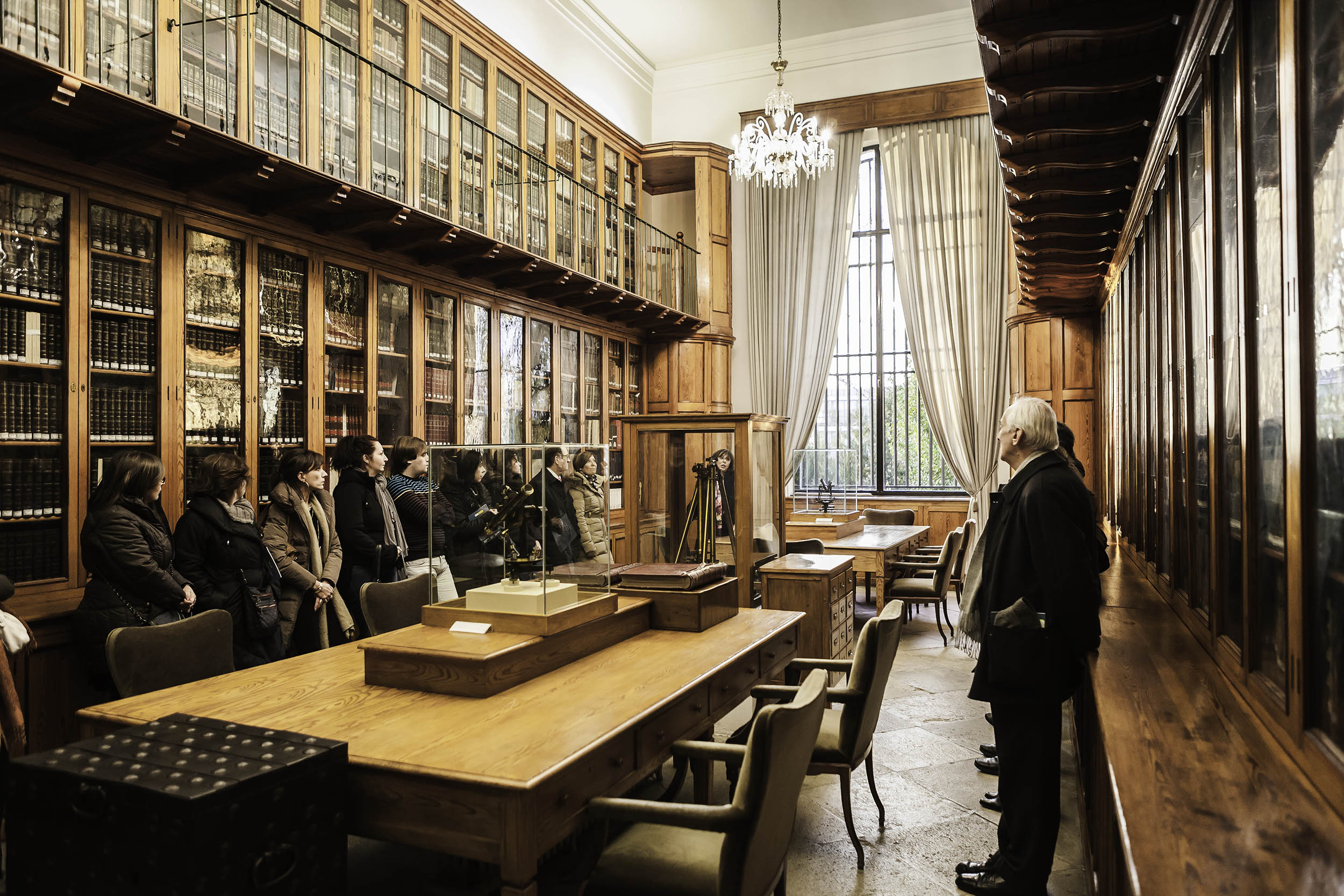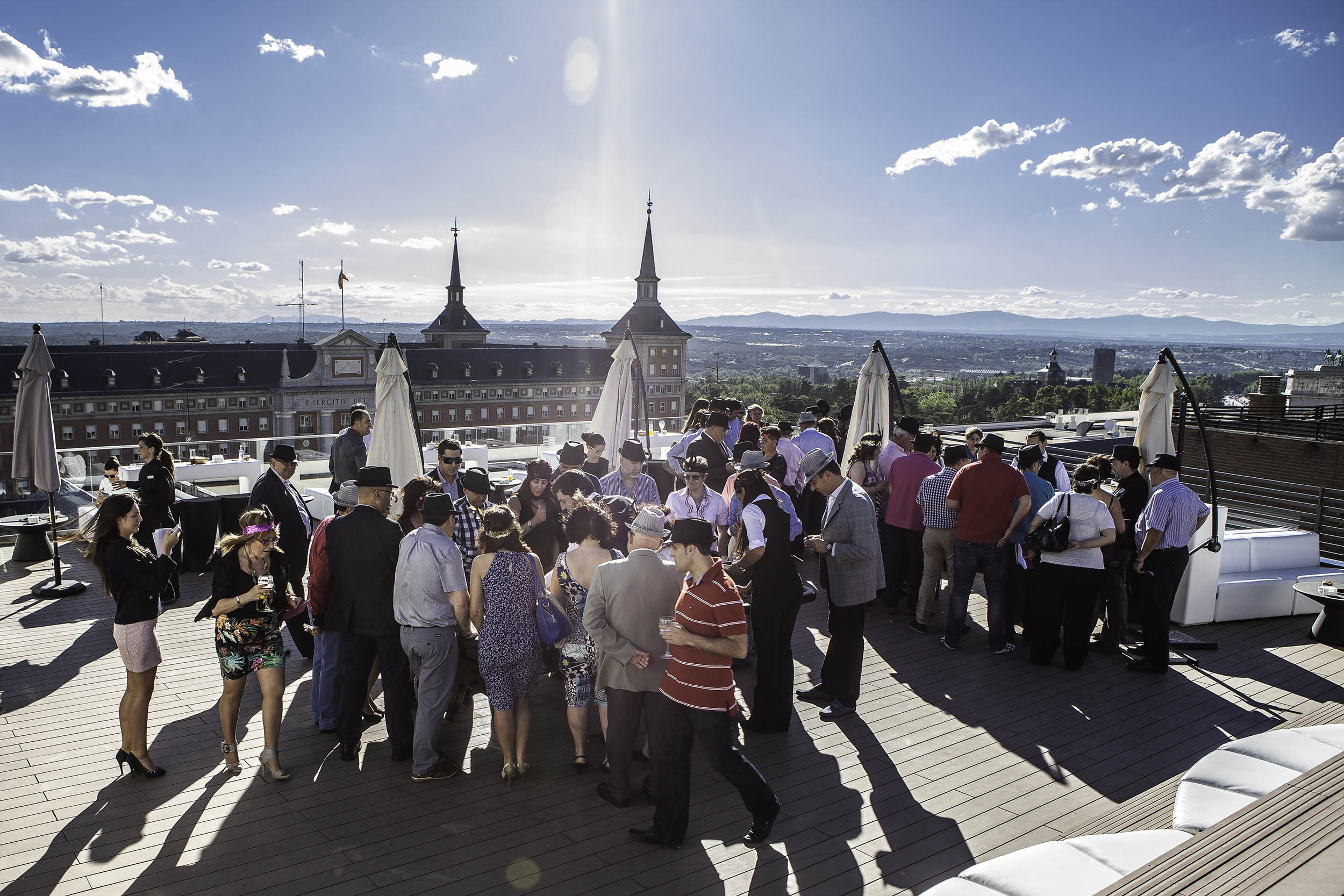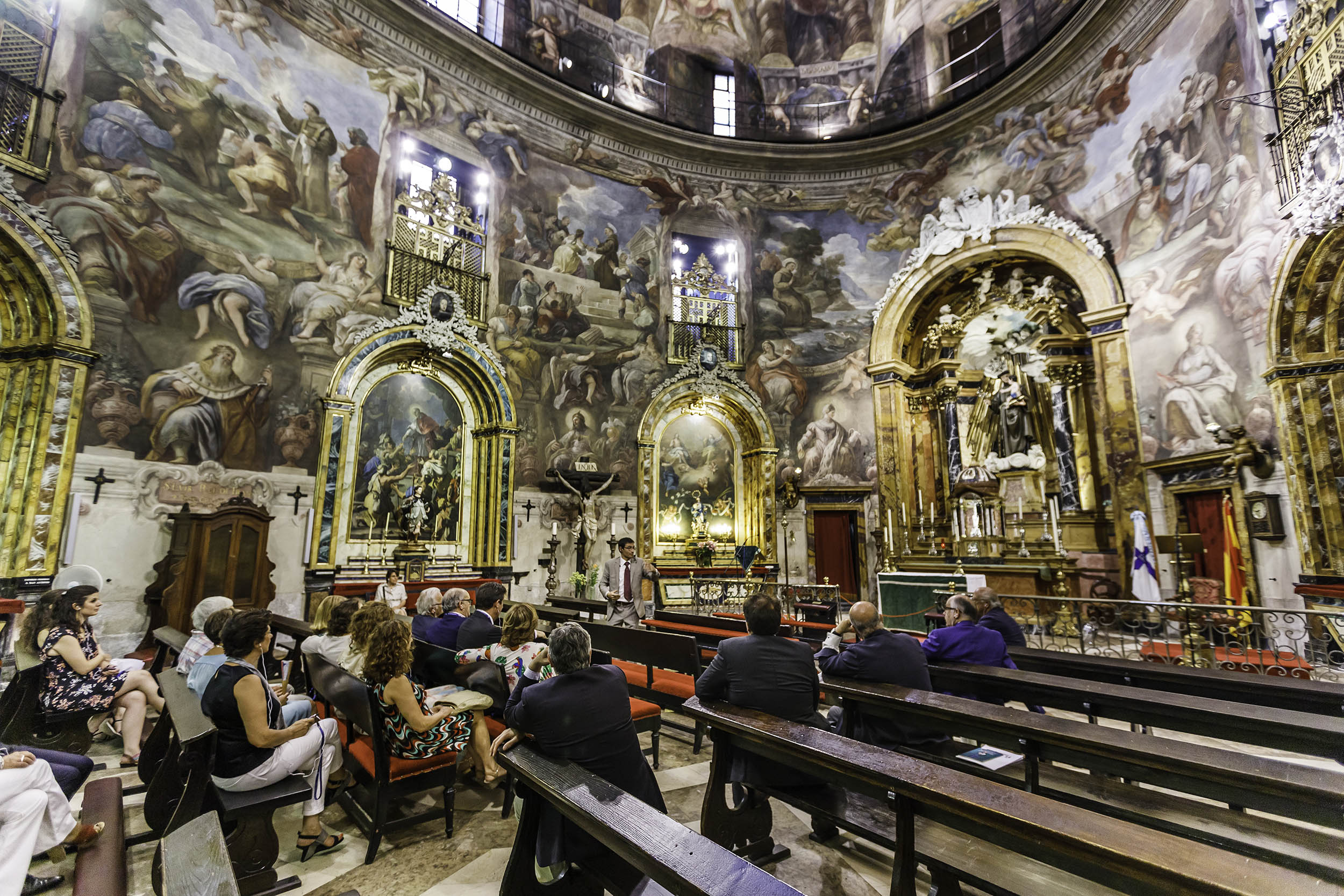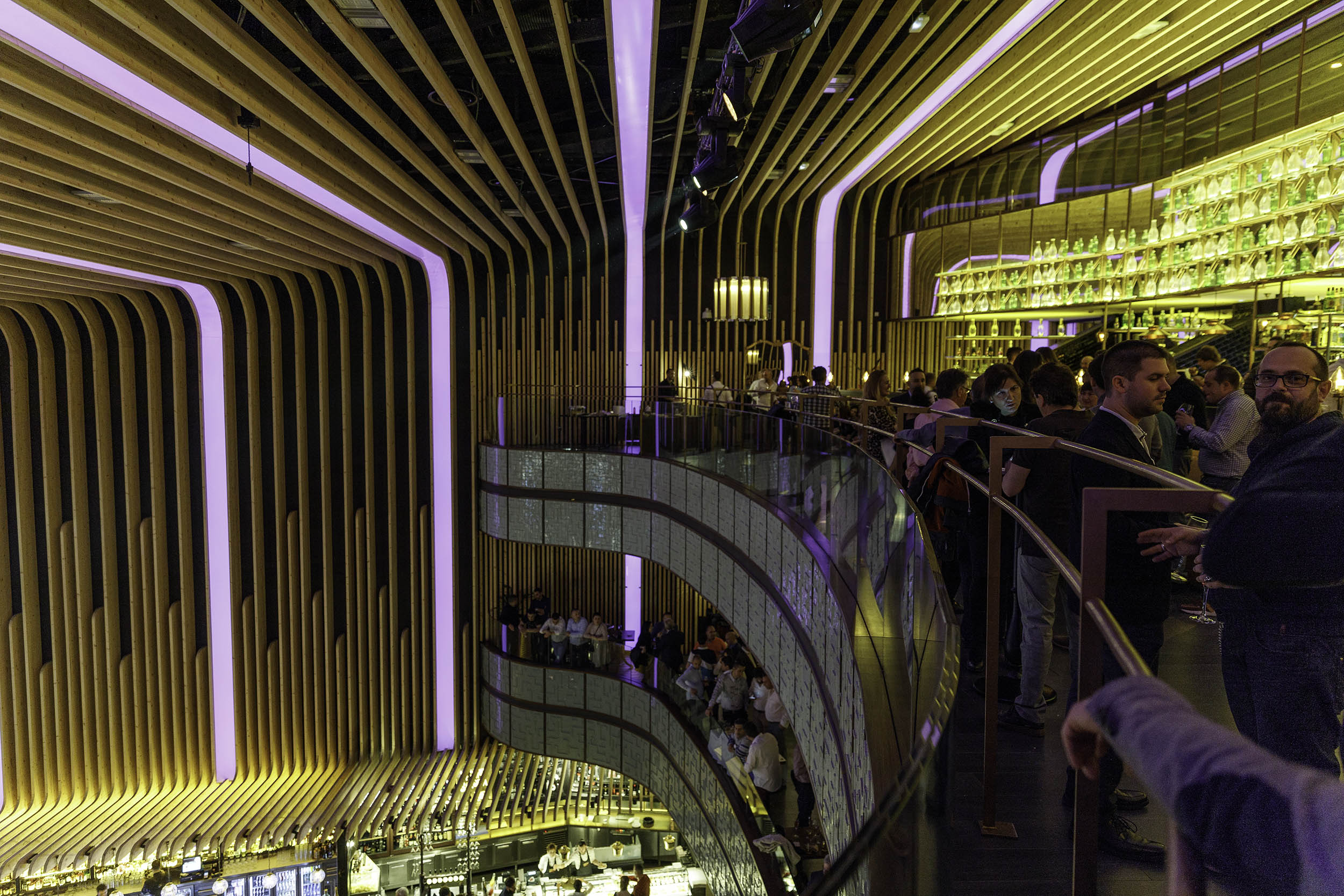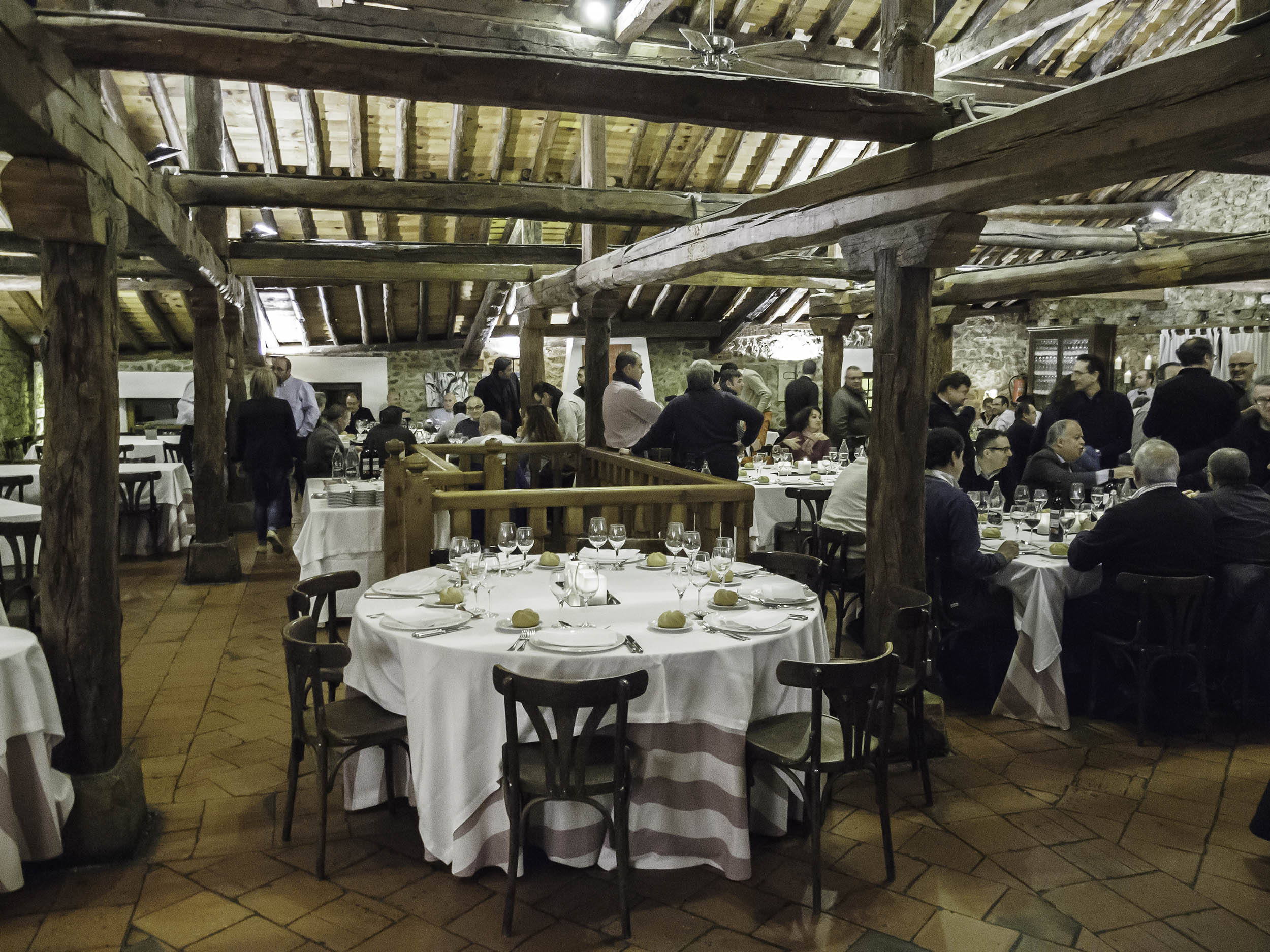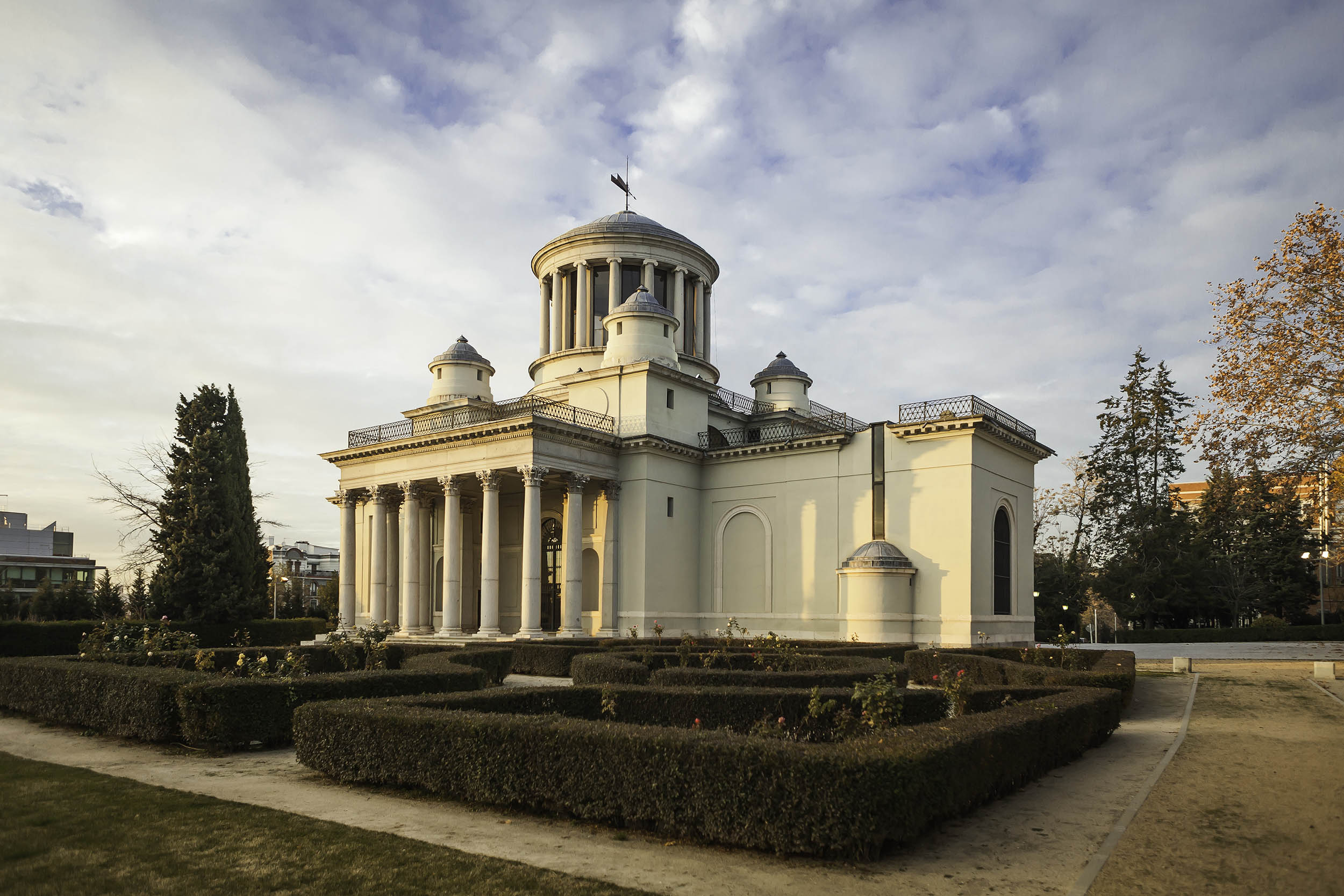
Welcome to Madrid, our city!
Vibrant, welcoming, cosmopolitan, and where no one feels like a stranger. With a rich artistic and natural heritage, it boasts an advanced transport network, high-quality accommodations, and excellent gastronomy.
A city that knows how to enjoy life, day and night. A meeting place for new trends and at the cultural forefront of Europe.
Welcome to Madrid, our city!
Vibrant, welcoming, cosmopolitan, and where no one feels like a stranger. With a rich artistic and natural heritage, it boasts an advanced transport network, high-quality accommodations, and excellent gastronomy.
A city that knows how to enjoy life, day and night. A meeting place for new trends and at the cultural forefront of Europe.
Since 2000, we have been offering professional services in Spain, a country of immense historical, artistic, and gastronomic diversity.
With the right experience and resources, we can design specialised events and incentives with MARFA quality and our personal touch.
As members of the Madrid Convention Bureau, we are specialists in Madrid and its surrounding areas, but we also provide services throughout Spain.
Advantages
Professional team specialized in tourism
We speak your language
Solid logistical support
Proactive and solution-oriented work system
Experts in “small details”
Events
Careful selection of spaces
Solutions to the needs of any type of event
Tailored design of complementary tourist activities
Incentive Travel
We create unforgettable experiences and moments
- We provide quality and creativity at the service of the company culture
We design actions and activities that strengthen the group’s coexistence and interpersonal relationships.

Located in the urban heart of Madrid, the 200-hectare cultural landscape evolved from the creation of the tree-lined Paseo del Prado, prototype of the Hispanic avenue, in the 16th century.
With more than 125 hectares and more than 15,000 trees, El Retiro Park is a green oasis in the heart of the city. A remnant of the 17th-century Palacio del Buen Retiro, the park is home to a large man-made lake and the Palacio de Velázquez and the Palacio de Cristal (cast iron and glass work built in 1887 to house a display of exotic plants brought from the Philippines). Both are currently used as exhibition rooms by the Reina Sofía Museum.
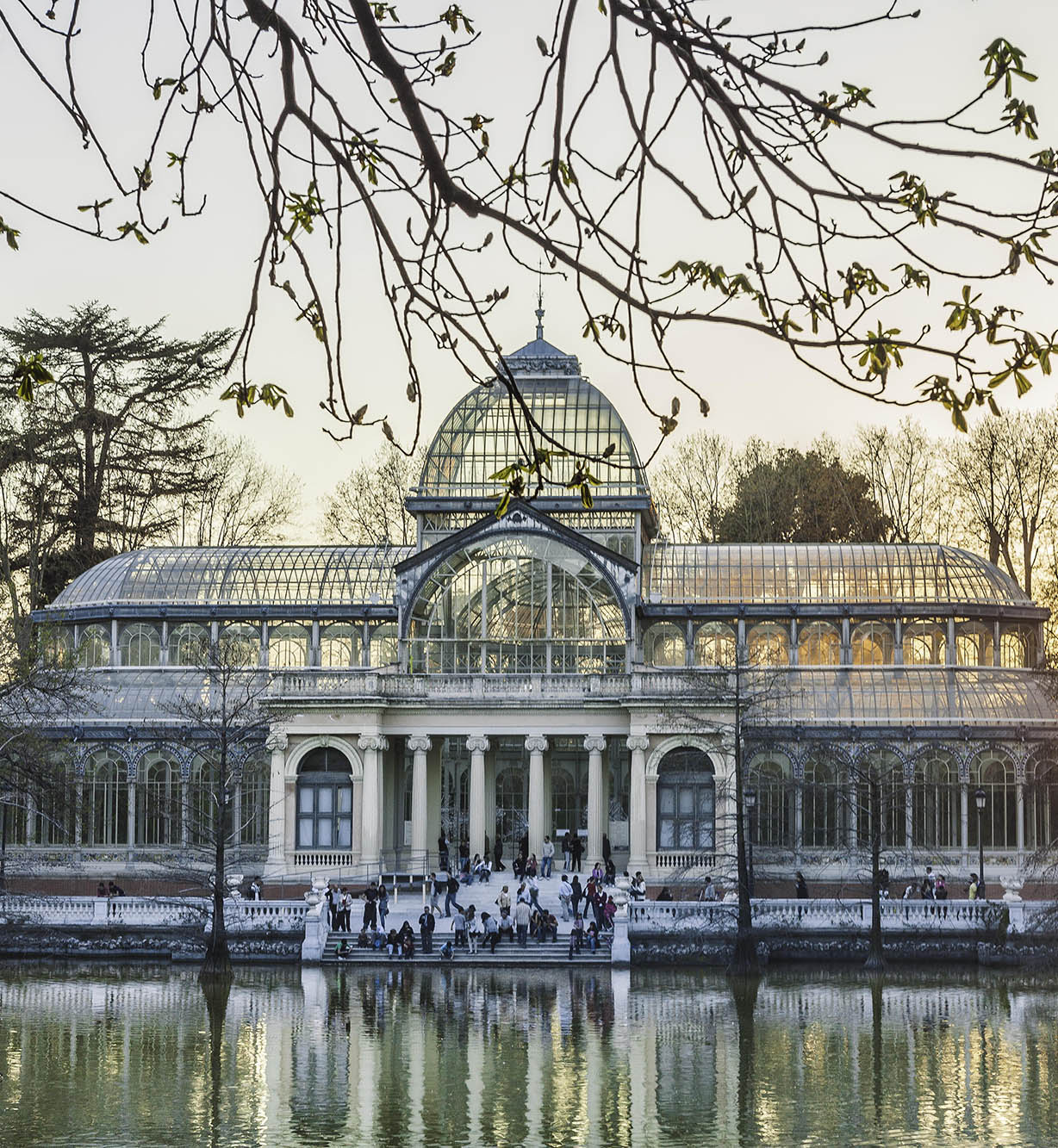
Located in the urban heart of Madrid, the 200-hectare cultural landscape evolved from the creation of the tree-lined Paseo del Prado, prototype of the Hispanic avenue, in the 16th century.
With more than 125 hectares and more than 15,000 trees, El Retiro Park is a green oasis in the heart of the city. A remnant of the 17th-century Palacio del Buen Retiro, the park is home to a large man-made lake and the Palacio de Velázquez and the Palacio de Cristal (cast iron and glass work built in 1887 to house a display of exotic plants brought from the Philippines). Both are currently used as exhibition rooms by the Reina Sofía Museum.

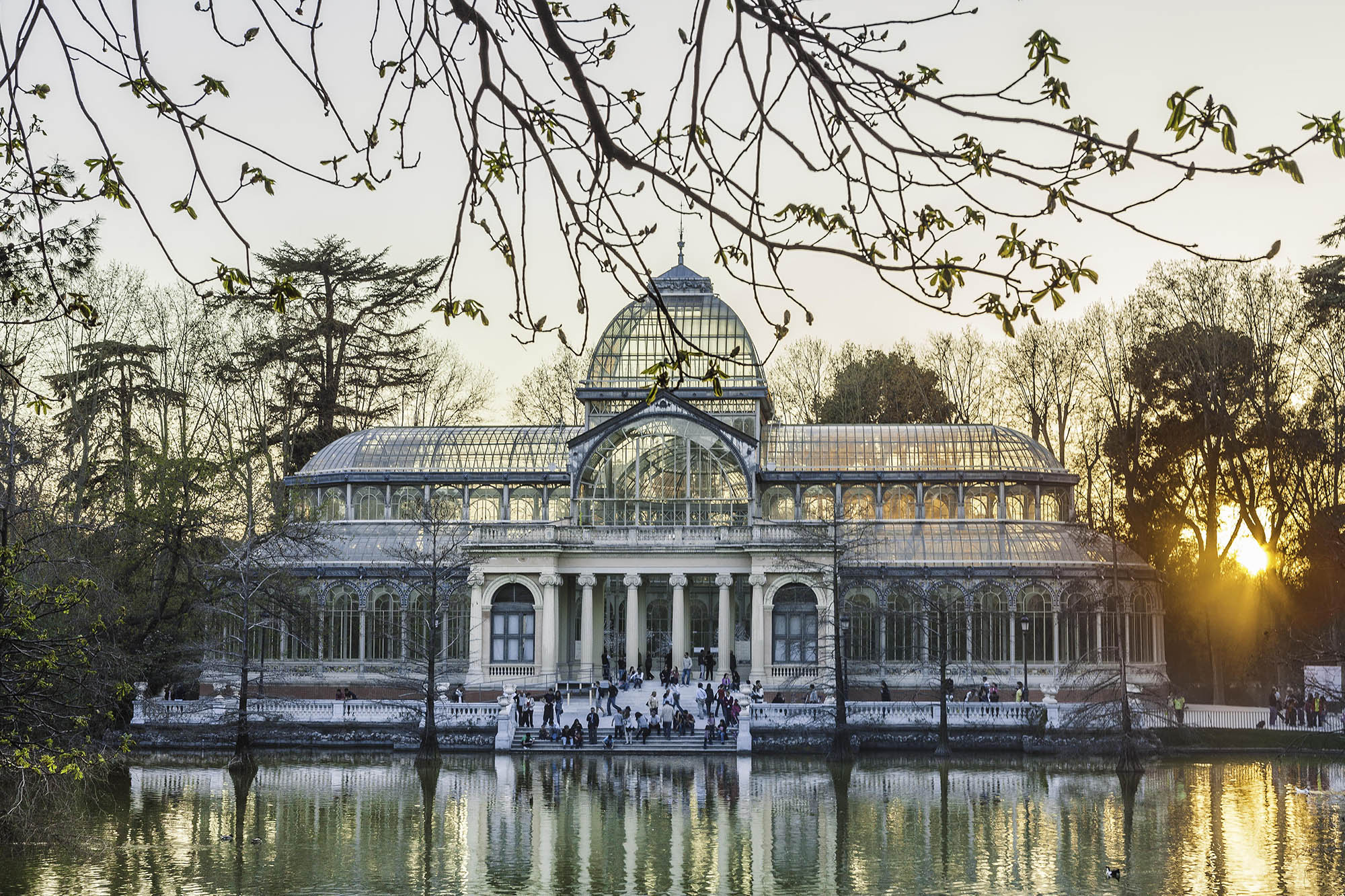
Without leaving the Community of Madrid, we can enjoy 4 World Heritage Sites.
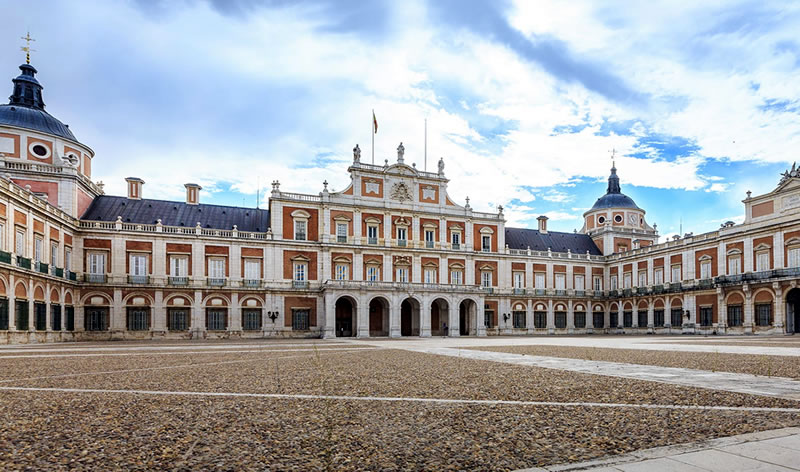
Aranjuez
49 kms from Madrid, 35 minutes by motorway.
Royal Palace, gardens and Old quarter, as well as its natural landscape in different thematic tours.
Recreational area of kings in the XVI century and a great natural wealth give rise to extraordinary products of the garden such as strawberries, strawberries and asparagus, delicious in any of its recipes: in vinaigrette, grilled, gratin, in sauce ….
Fruit of hunting tradition of the monarchs, it is typical the hunting kitchen with excellent quail, partridges, rabbit “with garlic” and of course, the pheasant that is star of its forests.
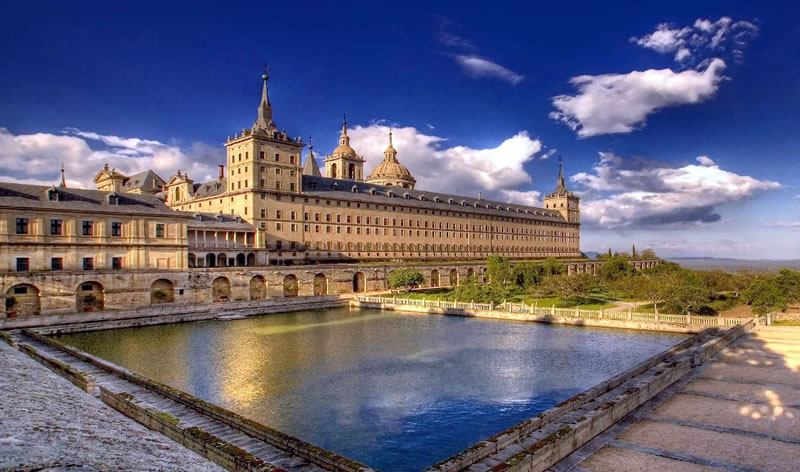
El Escorial
45 km from Madrid.
Royal Site of San Lorenzo de El Escorial, historical gardens, Valley of the Fallen (Valle de los Caídos), Houses and Palaces in the old part of the town, the King’s carport and natural surroundings (La Herrería (forest), Arboreto Luis Ceballos (forest), Silla de Felipe II, (King Philip II’s chair)…).
It has varied and good restaurants where you can taste authentic Madrilenian and Serrana (mountain) cuisine: cocido madrileño (chickpea stew), tripe, Castilian soup, veal from the Mountains of Guadarrama, grilled lamb and suckling pig and fish such as sea bream and cod. Sweets such as anise donuts and canutitos de crema (pastry rolls filled with cream).
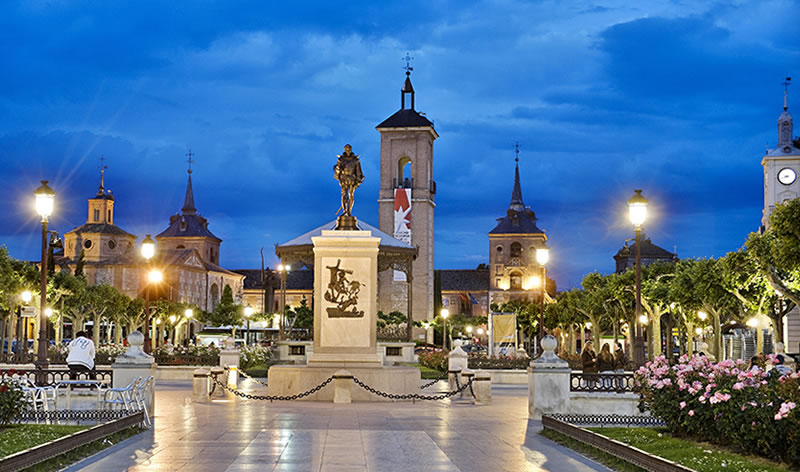
Alcalá de Henares
30 kms from Madrid.
Universidad de Alcalá, Plaza de Cervantes, Casa natal de Cervantes, Regional Archaeological Museum, Roman City, Laredo Palace, Archbishop’s Palace, Corral de Comedias, …
Famous for its tapas and its cuisine with references to Don Quixote are typical; Duelos y Quebrantos (Duels and Losses – scrambled egg and pork dish) Alcalá breadcrumbs and sugarcoated almonds or a pastry and cream cake.
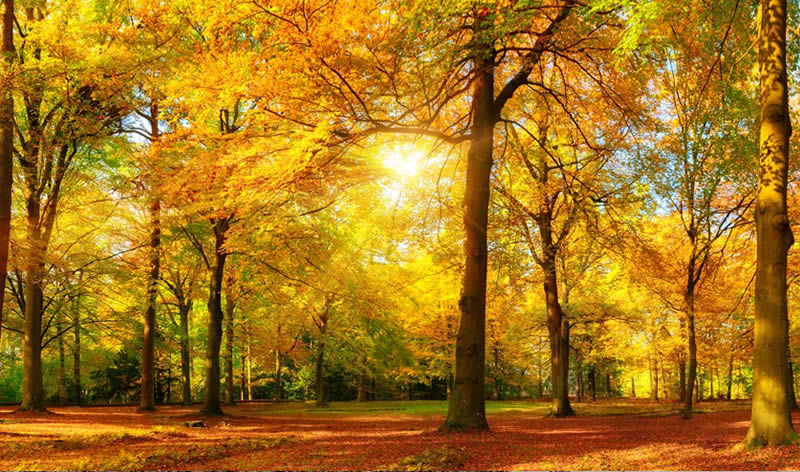
Hayedo de Montejo
At the foot of the Mountains of Ayllón, 95 km from Madrid.
An old meadow of beech and oak oaks as a sample of the admirable landscape and ecological diversity of one of the most unique forests of the region.
You have to visit the Casa del Hayedo and the Information Center of the Mountains of the Rincón (Corner) Biosphere Reserve located in Montejo de la Sierra and carry out some of the guided itineraries that cross this magnificent space.
In just one hour, we have another 3 treasures from UNESCO
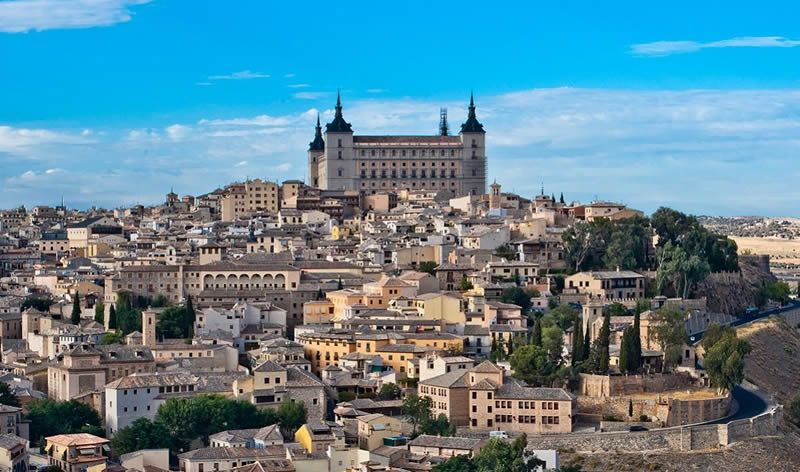
Toledo
72 km from Madrid, 25 min. in AVE (high speed train)
Touring the rich architectural heritage of the city of the three cultures includes the Church of Santo Tomé, the Synagogue of Santa María la Blanca, the Monastery of San Juan de los Reyes (St. John of the Kings), the Mosque of Cristo de la Luz (Christ the light), the Cathedral, the Alcázar (Fortress).
Gastronomic Capital 2016, some of its most typical dishes: Picadillo (minced meat like dish), breadcrumbs, carcamusas (pork stew), carcamusas (chorizo and potato stew), venison, cochifrito (slices of suckling pig), chickpea stew, olla podrida (bean and chorizo stew), lamb stew, garlic soups, stewed partridge accompanied by some of their craft beers.
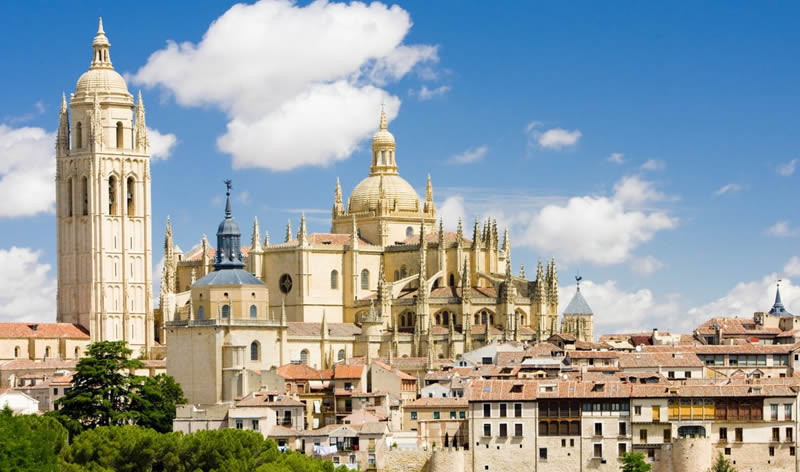
Ávila
113 km from Madrid.
La Muralla (The Old City Wall), the Cathedral, the Basilica of St. Vicente, the Royal Monastery of St.f Tomás, and a long tour of its hermitages, churches and museums such as the Teresiano Convent of St. Teresa
Beans from El Barco, veal steak and sweet egg yolks from St Teresa is the most typical, but also, the roasted goat leg from Candeleda, lamb from the Amblés Valley and the roasted suckling pig, and the trout or cod for fish dishes.
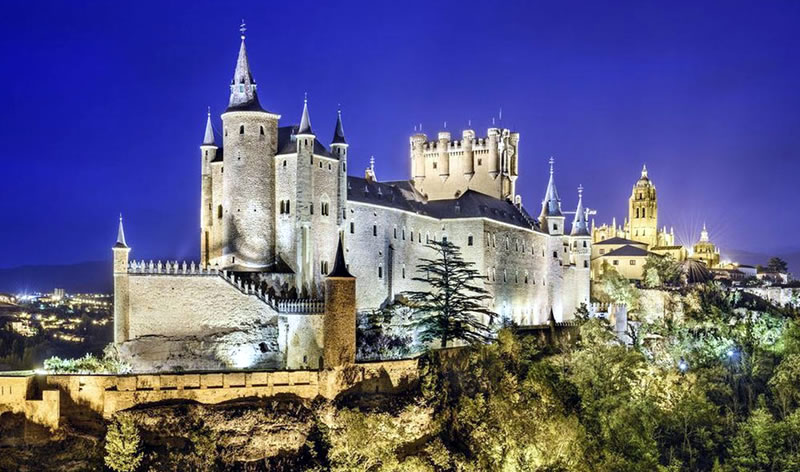
Segovia
93 km from Madrid, 30 min. in AVE. (high speed train)
Aqueduct, Alcázar, Cathedral, Convent of St Antonio the Royal, The Old town, Royal Palace of la Granja (the Farm) of St. Ildefonso (which is the name of a small town).
The most typical dishes are the Judiones (giant broad beans) of La Granja, the roasted suckling pig and the suckling pig, and the famous cake; Ponche Segoviano (Segovian sponge cake). Spanish sausages such as chorizo from Cantimpalos. It has three large wine areas: Rueda, Ribera de Duero and Valtiendas.
Contact our DMC department
Contact our DMC department


